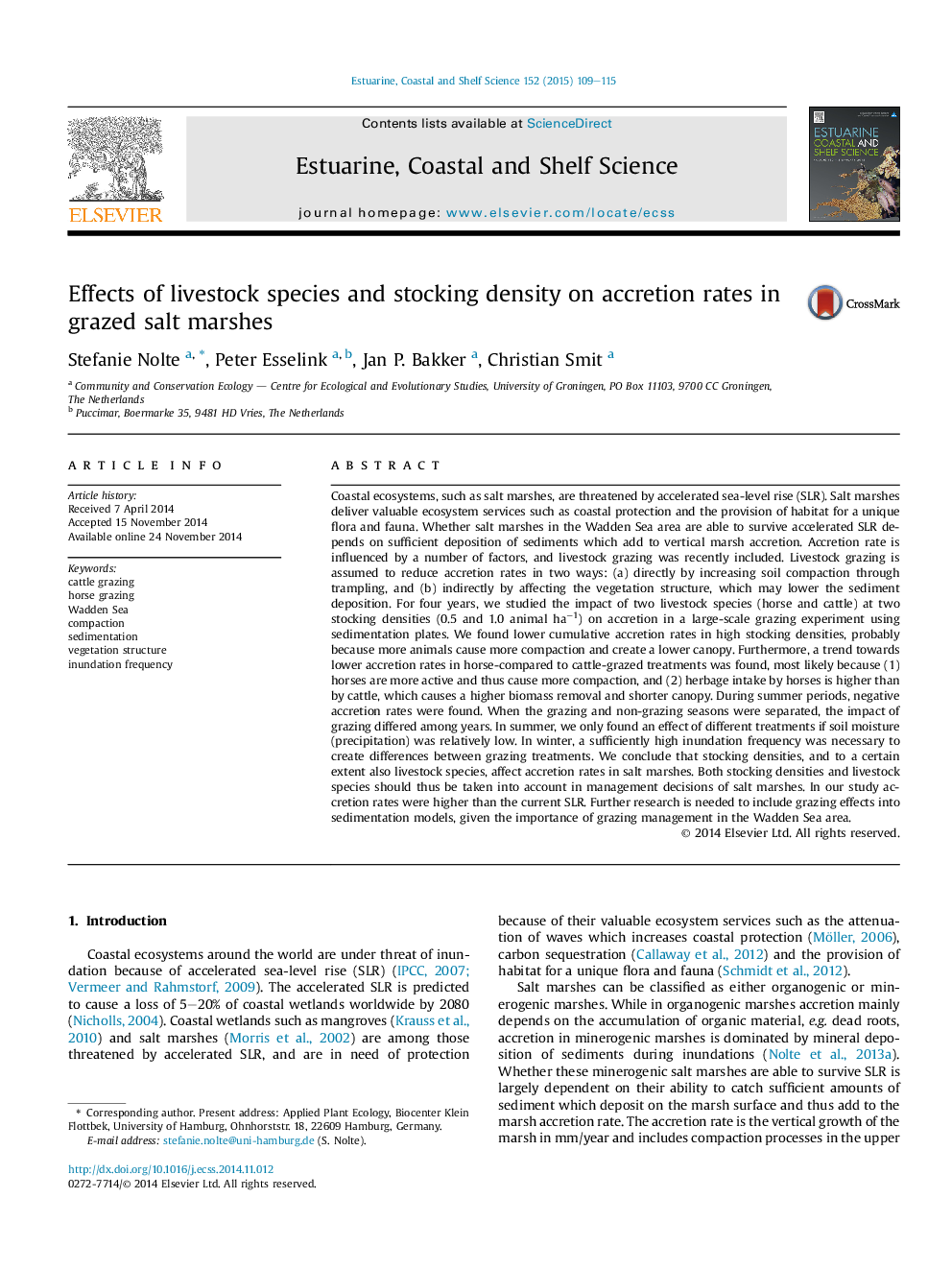| کد مقاله | کد نشریه | سال انتشار | مقاله انگلیسی | نسخه تمام متن |
|---|---|---|---|---|
| 4539550 | 1626644 | 2015 | 7 صفحه PDF | دانلود رایگان |
• High compared to low stocking densities lead to lower accretion rates.
• Behavioural differences between livestock species influence accretion rates.
• Horses lead to lower accretion rate, because of their higher activity.
• Grazing affects accretion directly (compaction) and indirectly (vegetation).
Coastal ecosystems, such as salt marshes, are threatened by accelerated sea-level rise (SLR). Salt marshes deliver valuable ecosystem services such as coastal protection and the provision of habitat for a unique flora and fauna. Whether salt marshes in the Wadden Sea area are able to survive accelerated SLR depends on sufficient deposition of sediments which add to vertical marsh accretion. Accretion rate is influenced by a number of factors, and livestock grazing was recently included. Livestock grazing is assumed to reduce accretion rates in two ways: (a) directly by increasing soil compaction through trampling, and (b) indirectly by affecting the vegetation structure, which may lower the sediment deposition. For four years, we studied the impact of two livestock species (horse and cattle) at two stocking densities (0.5 and 1.0 animal ha−1) on accretion in a large-scale grazing experiment using sedimentation plates. We found lower cumulative accretion rates in high stocking densities, probably because more animals cause more compaction and create a lower canopy. Furthermore, a trend towards lower accretion rates in horse-compared to cattle-grazed treatments was found, most likely because (1) horses are more active and thus cause more compaction, and (2) herbage intake by horses is higher than by cattle, which causes a higher biomass removal and shorter canopy. During summer periods, negative accretion rates were found. When the grazing and non-grazing seasons were separated, the impact of grazing differed among years. In summer, we only found an effect of different treatments if soil moisture (precipitation) was relatively low. In winter, a sufficiently high inundation frequency was necessary to create differences between grazing treatments. We conclude that stocking densities, and to a certain extent also livestock species, affect accretion rates in salt marshes. Both stocking densities and livestock species should thus be taken into account in management decisions of salt marshes. In our study accretion rates were higher than the current SLR. Further research is needed to include grazing effects into sedimentation models, given the importance of grazing management in the Wadden Sea area.
Figure optionsDownload high-quality image (241 K)Download as PowerPoint slide
Journal: Estuarine, Coastal and Shelf Science - Volume 152, 5 January 2015, Pages 109–115
